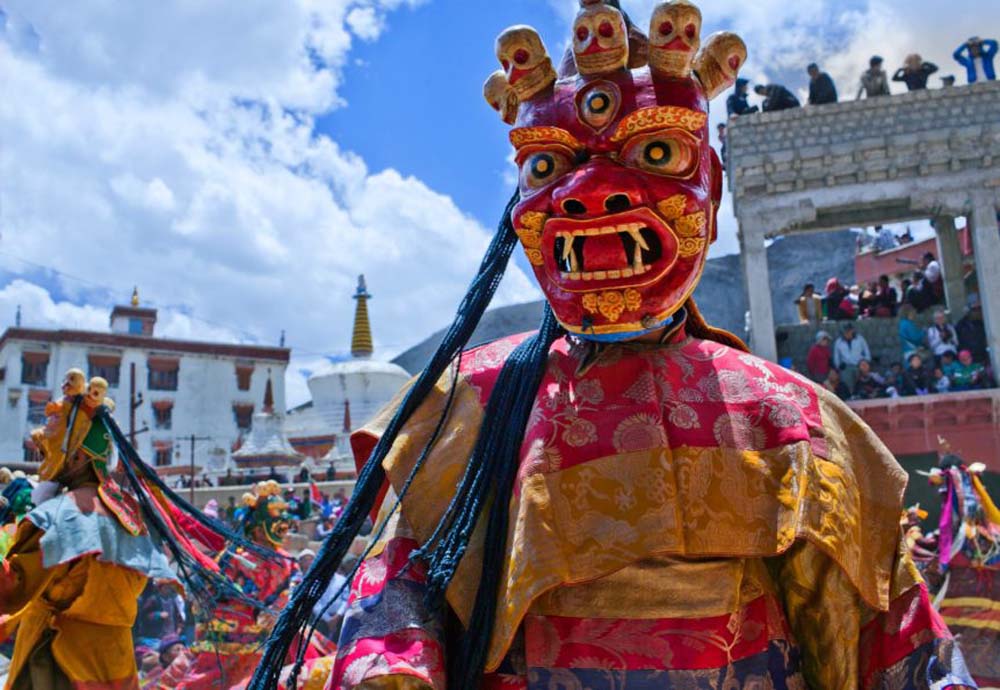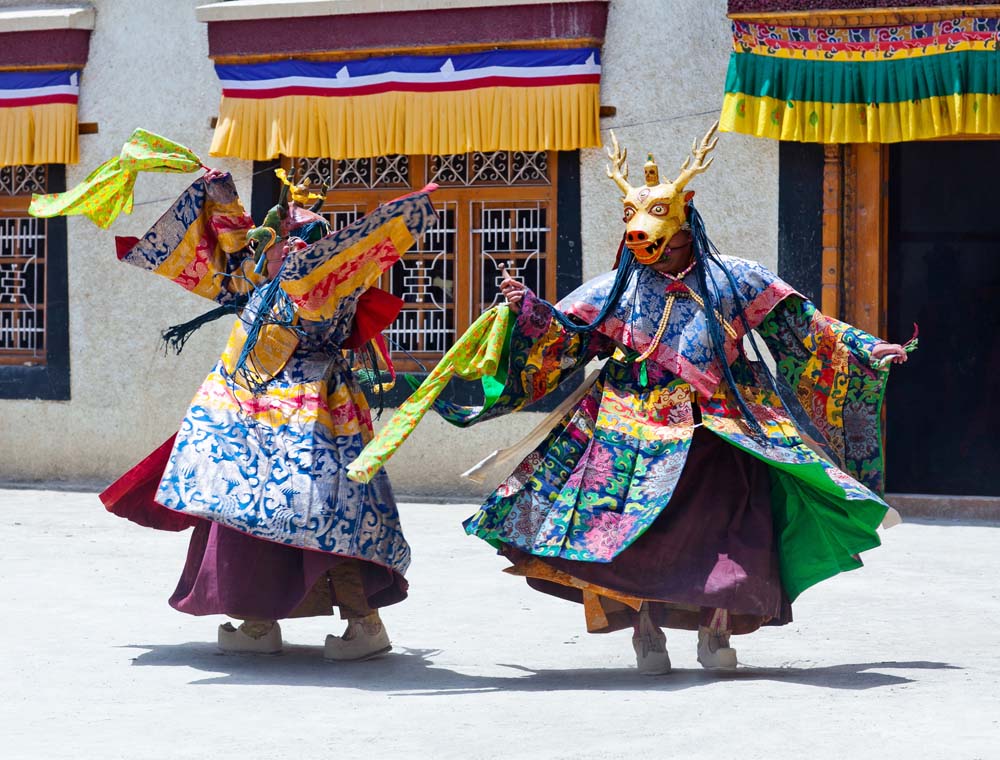Greg Suffanti
QFWF, February 2018, updated February 2020 and March 2022,
Losar, Chötrul Düchen, Saka Dawa, Chokor Düchen, Lhabab Düchen
The most important date on the Tibetan calendar

The Tibetan New Year, also known as Losar Festival, is the most important date on the Tibetan calendar.[1] The holiday is celebrated over a period of fifteen days, with the main celebrations taking place during the first three days.
Losar starts on the first day of the first month according to the Tibetan calendar, which is based on the lunar calendar.
Quite often, Losar and Chinese New Year begin on the same date, but this is not always so, and the differences can be as small as one day or as great as an entire lunar month.[2] In 2018 Losar began on Friday the sixteenth of February. 2018 is called The Year of the Male Earth Dog and March 2022 the Year of the Water Tiger.
“To mark Losar, a three-day festival is celebrated by Tibetans worldwide with prayers, hanging prayer flags, ceremonies, folk dances, passing fire torches among gatherings, and friends and family reunions.
As one of the most widely celebrated Tibetan festivals, Losar is a time when Tibetan cultural values are greatly exhibited. Warm greetings are exchanged with everyone from family members to neighbors.
Delicious Tibetan foods are served such as Dresi, Kabsay, Guthuk, different varieties of meat, bread, butter tea and other dishes are served to guests who are invited into homes. Families visit temples to offer prayers and give gifts to monks.”[3]
I’ve been a (Tibetan) Buddhist for a number of years and a volunteer at the Maitreya Instituut in Amsterdam since 2001.
This year, as in many past, we had a pot luck dinner for volunteers to celebrate the start of Losar. Each person brought something he/she enjoys eating, and with a bit of coordination, we had a gourmet vegetarian feast.
After the meal we opened our doors to the public and our resident teacher, Ven. Lobsang Gendun, a Dutch Buddhist monk, led the Lama Chopa Guru Puja.
As Lama Zopa Rinpoche explains,
“right now you have met the Buddhadharma and you have met a guru. With this body you can purify all the negative karmas collected from beginningless time that can cause rebirth in the lower realms and you can create all the causes for happiness in future lives as well as ultimate happiness, liberation from samsara.”[4]
Lama Chopa Guru Puja

By doing the Lama Chopa Guru Puja you are creating a positive link with your personal gurus and offering them thanks for their guidance. Further, the entire path to enlightenment is contained within the Lama Chopa Guru Puja, so it is a Buddhist teaching as well.[5]
“During the reign of the ninth Tibetan king, Pude Gungyal (617-698), it is said that this custom merged with a harvest festival to form the annual Losar festival.”[6]
It is estimated that there are currently around six million Tibetans living in Tibet and around 150,000 Tibetans living in exile.
The first three days
Although the festivities are celebrated for fifteen days, it is really the first three that are most commonly celebrated and that have retained a similar structure through the last 1,300 years:
- The first day of the New Year is called Lama Losar, when all Tibetan Buddhists pay tribute to their teachers or gurus.
Family members get together and gifts are exchanged. - The second day is called King’s Losar, which in ancient times meant paying homage to the king.
More recently, the Dalai Lama’s would use this day to exchange greetings with national leaders.
On this day people visit friends and relatives and share special holiday meals. - The third day of Losar is called Choe-Kyong and is a day when prayer flags are hung and people visit monasteries and shrines and do circumambulations around stupas and other holy objects.[7]
Losar 2018: from the 16th of February to the 18th of February, Losar 2019: from the 5th of February to the 7th of February, Losar 2020: from the 24th of February to the 26th of February, Losar 2021: from the 12th of February to the 14th of February
Notes
[1] tibetan-festivals
[2] www.tibetpedia.com/losar
[3] www.tibetpedia.com/losar
[4] teachings-give-stretching-legs
[5] guru-puja
[6] Crump, William D., “Losar” in “Encyclopedia of New Year’s Holidays Worldwide”, (McFarland & Co.: 2008), pp. 236-238
[7] Source: losar-tibetan-new-year










